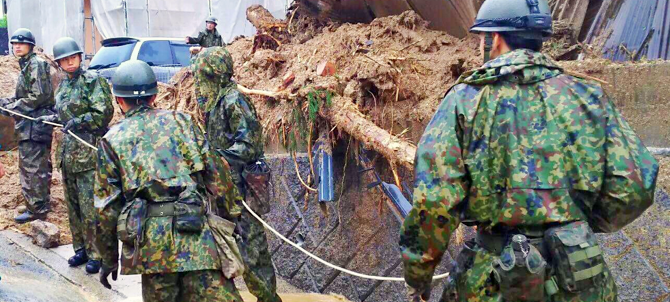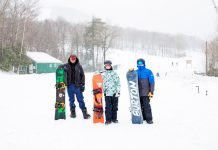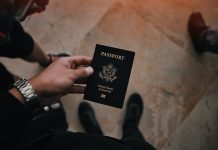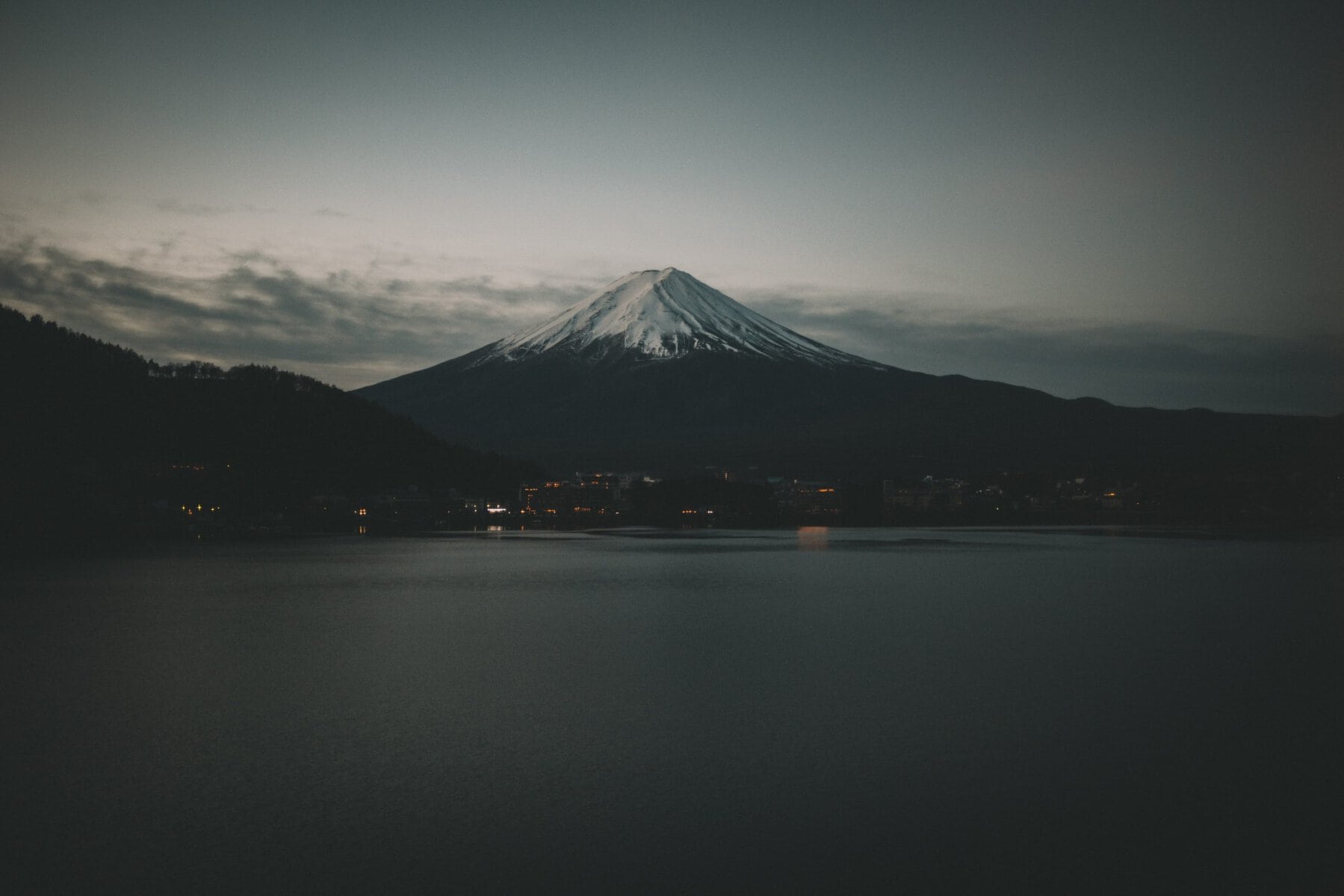We landed and sprinkles — nothing more, no ferocious pelting rain — dotted the window on the row-20 window of our Japan Airlines flight.
Carry-ons in tow, we said, “Arigato gozaimasu” to the flight attendants and were funneled through the jetway. Once out of the constraints of the narrow tube, we broke free and picked up speed on our way to baggage claim. I had an unshakeable sense of urgency to get out of this area and back to the safety of home as quickly as possible. Something threatening hung in the air, and I was determined to escape it with the kids.
As we entered baggage claim, the announcements started, “Passengers expecting to use the bus line for transport: All busses are canceled due to the weather.” This announcement alternated with a Japanese version of the same ominous announcement. We walked by two smiling Japanese attendants who bowed to us respectfully as the sliding doors parted and we exited baggage claim.
I was not prepared for what I saw next, but it instantly clued me into the severity of the conditions outside the airport. Sprawled all across the floor of the airport lobby were people. Japanese people, usually so concerned with manners and appearances, were sprawled out, sleeping on the airport floor. In the corners, people were crouched with their knees to their chests as they whispered to their loved ones through their cell phones.
I steered my oversized suitcase and my kids around piles of belongings, sock-covered feet, blankets, and tarps. The busses may not have been running, but we were getting out of there before things got really bad. I had no way of knowing that outside the shelter of the airport parking lot, things were already bad.
We zigzagged through the columns of cars in the parking lot until we spotted the rear end of our blue Honda Mobilio. It started sprinkling again, so I told the kids to get in and buckle while I loaded up our bags. Once inside the car, I plugged my phone into my car charger and started the directions back to MCAS Iwakuni. Based on a text exchange with a friend back in Iwakuni, I knew that the toll roads (the fastest route home) were closed. I would have to take the long way. Google Maps let me know we’d be home by 11:40 a.m., roughly two hours and 40 minutes. I was good with that. The kids and I discussed plans for bath order and mandatory pajamas and naps for the rest of the afternoon once we were home. And, between our exhaustion and the crummy weather, a pizza was definitely in the cards.
I followed the directions away from the safe haven of the airport. And we made it almost 10 minutes before the instructions to turn right were foiled by the first road blockade of the day. I wasn’t thrown. I wasn’t surprised. I’d anticipated this, and as I straightened the wheel to instead carry on down the road, I wasn’t any less sure we’d get home.
Google Maps recalculated and sent us down another option. I won’t bother giving you the street names or numbers because they are not only irrelevant unless Hiroshima prefecture is your old stomping grounds, but because the streets became repetitive, monotonous very soon. I saw roads from both directions — coming and going. I lost track of what was Route 2 or 34 or 375 or 32 or 194 or 59 or any of the many residential streets only identified by a combination of Kanji characters that only reminded me that I am illiterate in this country.
I hit another roadblock, then another. I drove down a route often several miles before finding the dead end — whether that was a worker waving a red flag or baton or giving me the crossed forearms that means “no” in Japan. I was always directed to turn around, but with helplessness lumped in my throat, I couldn’t ask how to get home. I didn’t know the road names. I don’t speak more than eight Japanese phrases, none of which are “How can I get to Iwakuni?”
And it wasn’t always a human interaction. I often found myself relying on a gut feeling when met with water covering the road or car-sized segments of road missing — swallowed by the river. I would glance in the rearview, catch the faces of my kids and realize that I’m no longer the 20-something, fearless girl with nothing to lose. I had everything to lose, and I was no longer jaded with the notion that nothing bad could really happen.
We tried routes, new routes, then retried them from another angle or with another purpose. This time, let’s just try to get to the train station, this hotel or another, or back to the airport. With the soundtrack of the emergency siren blaring, I couldn’t even entertain a clear thought — all I kept thinking was that I needed to get us the hell away from this river, and I needed to do it right now. With every dead end and flooded road, I grew weary. I cast out dark images from my mind — the what-ifs, the blame, the guilt.
I cried, but only twice, and only for a moment. I chased the emotion out of my body as quickly as it overcame me. I heard my own mom voice in my head when my kids break down and cry in frustration. I always ask them if crying is helping solve the problem. The answer is always a resounding no. So, I wiped my face, breathed, and stared down at the map on my phone through the pool of tears in my eyes to find another way. There had to be another way. There was no thought in my mind that we could be completely isolated, completely stranded where we sat.

With each three-point turnaround, I became more angry, more frustrated, and more lost. After being at this for over four hours, I pulled into a 7-11 so my kids could go to the bathroom — and so I could go to the bathroom, although my adrenaline fooled me into thinking that I didn’t need to go until I was in the stall. My kids begged to get something to eat, and it occurred to me that we still hadn’t had anything beyond juice and Twizzlers. I desperately wished I could give them something of substance back in the comfort of our kitchen, but I was realizing now that the hope of that happening today was fading.
We headed for the refrigerated section and found only empty shelves. Drink coolers were bare. With my tail between my legs, I followed them back to the snack aisle. But, sadly all we found were some rejected bags of candy and shrimp chips. We had waited too long. And this was all that was left. This is all I could offer my kids who were starving and exhausted.
They got chips and water, and I got a carbonated water in hopes of fooling my stomach into thinking it was full. In the car, I text my friend back on base and I text my husband who was feeling equally helpless in Guam while I navigated this situation by myself, as military spouses so often have to do. I had a quarter tank of gas (7-11s in Japan do not sell gasoline), and it was hours past our anticipated 11:40 arrival, now pushing 2 p.m.
Photo Credits: Associated Press








































I was so worried and trying not to bother you while I knew you were driving. Then, later in the summer when our train was suddenly canceled, and Martha had to rent a car and drive us on the back roads to Iwakuni, I could see it up close!